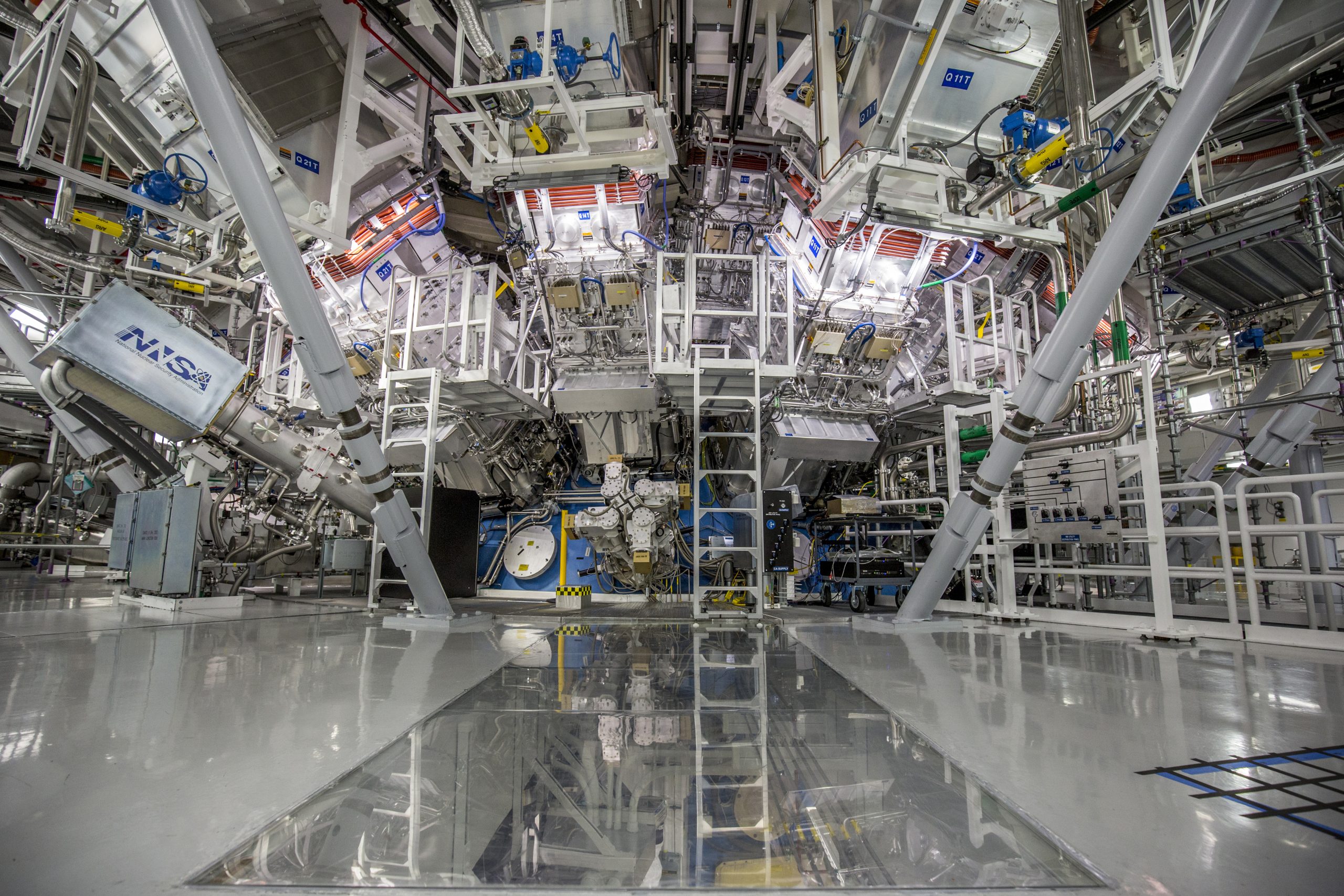Fusion reaction yields more energy than is put in – nuclear fusion at last?
Welcome news from the US National Ignition Facility. For the first time, the researchers have succeeded in extracting more energy from the fusion reaction than was put into it by means of lasers. Over-unity, that’s called in the energy world. Reason to cheer, and give pesky oil dictators the middle finger? Unfortunately, not so fast. Not yet.
Contents
Why nuclear fusion?
Nuclear fusion has been seen as the holy grail of energy supply for almost a century. No wonder. Our sun has been shining for billions of years thanks to nuclear fusion. Our oceans are also full of nuclear fusion reactant, deuterium (1 in 6,500 hydrogen atoms is a deuterium atom), and nuclear fusion yields more energy per gram than nuclear fission.
The reaction products of nuclear fusion, such as helium, are usually not dangerous. So there is almost no nuclear waste problem. But just as with finding the holy grail, it has still not been possible to build a nuclear fusion power plant.
The three approaches to nuclear fusion
The fundamental technical problem of nuclear fusion is that you have to get two positively charged atomic nuclei to stick together. These repel each other. There are three approaches that more or less work. (There are more, such as muon fusion, but they are not very practical).
One is to make the atomic nuclei very hot, so that they collide often enough at the right speed to undergo fusion. This method is used in so-called tokamaks, a kind of donuts in which the atoms are held with strong magnets. Like in the international research reactor ITER in France.
The second method is to shoot the atomic nuclei at each other more or less accurately. This device is called a fusor and is currently used as a neutron source. As an energy source, the fusor has so far had no chance.
The third method is to press the atomic nuclei very strongly together, so that they fuse. This method has been used to achieve nuclear fusion in the California laboratory. It is also the only method by which we have achieved nuclear fusion that produces net energy, namely in a hydrogen bomb.
Compress with a huge laser
The trick of the NIF method is to use concentrated laser light to compress a small capsule of deuterium and tritium. This target, the size of a peppercorn, is compressed so tightly that nuclear fusion occurs. The amount of power that these lasers generate is really an awful lot, 500 terawatts.
In comparison, the total global energy consumption is 18 terawatts. This is possible because these lasers work for a very short time, around one billionth of a second. For the first time, the researchers succeeded in extracting more energy from the fusion reaction than was put in by the lasers: 3.15 MJ, while the lasers pumped in 2.05 MJ.
Working exchange now within range?
However, there is one but. You have to put a lot of energy into a laser to make it work: in this case around 400 MJ, so 200 times as much. So the actual fusion efficiency was still very low. Still, this is a promising start. Will the researchers succeed, for example, in extracting 200 times as much energy from the reaction, or in making the lasers 200 times more accurate and economical, and preferably both? Then we have a working nuclear fusion power station.
The major breakthrough was actually achieved last year, August 8, 2021. Because fusion plasma was created for the first time then, the energy yield shot up from approximately 0.2 to 1.4 MJ. In comparison, the jump from 1.4 to 3.15 is not very big. If these doublings continue every year, we will in principle have a working power station within 10 years.



